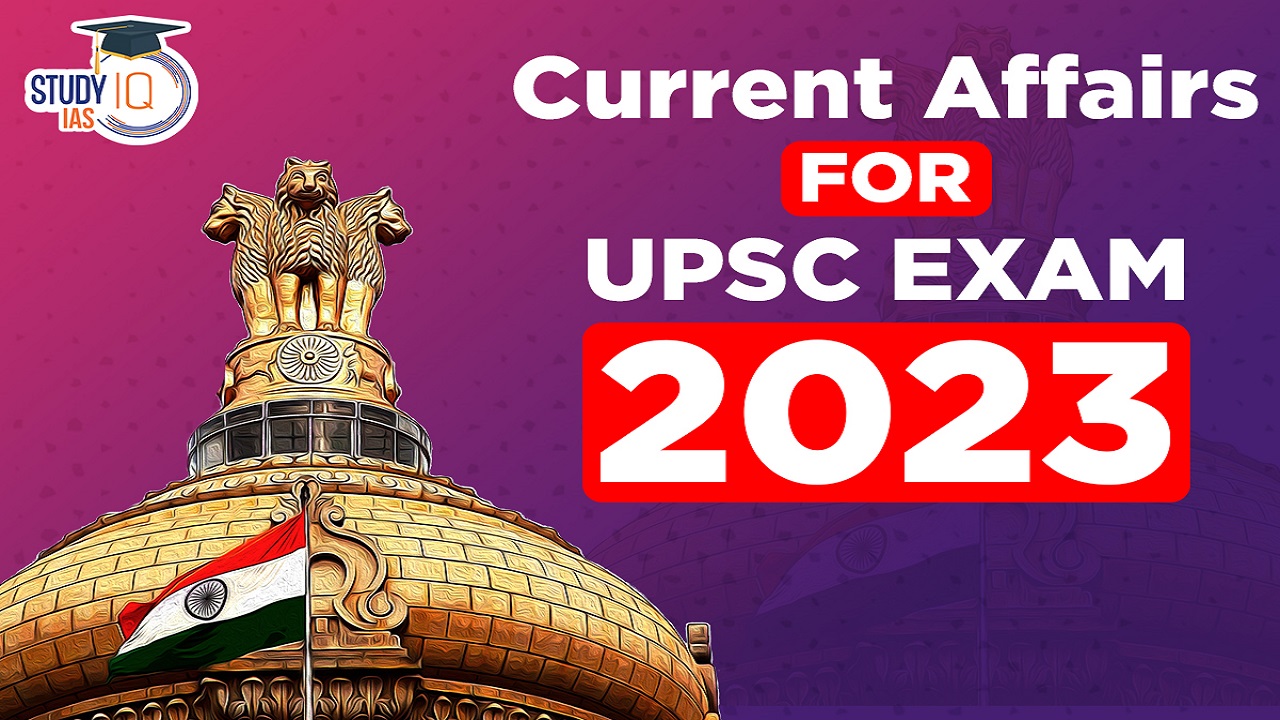Current Affairs 17th June 2023 for UPSC Prelims Exam
Aditya L1 mission
Context: The Solar Ultraviolet Imaging Telescope (SUIT) will be integrated with Aditya L1 mission.
About Adiya-L1
- Aditya-L1 is India’s first space-based mission to study the Sun. It will be placed in a halo orbit around the first Lagrange (L1) point of the Sun-Earth system.
- A satellite placed around the L1 point can continuously view the Sun without any occultation/eclipses.
- This will provide a greater advantage of observing the solar activities and its effect on space weather in real time.
- Aditya L1 will be a 400 kg-class satellite that will be launched using the Polar Satellite Launch Vehicle (PSLV) in XL configuration.
- Objective: To research the Sun’s corona (Visible and Near-infrared rays), photosphere (soft and hard X-ray), chromosphere (Ultraviolet rays), solar emissions, solar winds and flares, and Coronal Mass Ejections (CMEs), as well as conduct round-the-clock imaging of the Sun.
- Payloads: The satellite carried payloads that will observe the photosphere, chromosphere and the corona using electromagnetic and particle and magnetic field detectors.
- Significance:
- Aditya-L1 payloads are expected to provide the most crucial information to understand the problem of coronal heating, coronal mass ejection, pre-flare and flare activities and their characteristics, dynamics of space weather, propagation of particles and fields etc.
Lagrange Points
- Lagrange points are positions of equilibrium in the space where the gravitational pull of two large bodies precisely equals the centripetal force needed for a small object to remain stable.
- These points are named after Italian French mathematician Josephy-Louis Lagrange.
- Currently, there are 5 Lagrange points labelled as L1, L2, L3, L4 and L5. L1, between the Sun and Earth, and L2, on the same line but at the opposite side of the Earth are some of the famous Lagrange points in the Sun-Earth system.
Current Affairs 16th June 2023 for UPSC Prelims Exam
Stem Cell Technology
Context: Scientists have used stem cells to create synthetic embryos, without a sperm or an egg.
What is stem cell technology?
- Stem cells are a type of cells that can develop into specialised cells in the body, such as muscle cells, blood cells and brain cells etc.
- Stem cell technology involves using stem cells to develop tissues and later specialized organs of the body under laboratory conditions.
Applications of stem cell technology
- Observing stem cells mature into cells in bones, heart muscle, nerves, and other organs and tissue, helps understand occurrence of diseases.
- Stem cells can be guided to develop into specific cells that can be used to regenerate and repair tissues that may have been damaged by diseases.
- Stem cells can be cultured to form organs, which can be later used in organ transplantation. This reduces chances of rejection by the body.
- Particular type of stem cells can be used to test the drugs for safety and quality. This will reduce the need for trial and error in humans.
- Stem cell research holds the key to reverse the effects of aging and prolong life of our body.
Drawbacks of the technology
- There are no regulations or guidelines to control the misuse of technology.
- Stem cell technology is more effective if the cells are obtained during embryonic stage.
- The long-term effect of using artificial stem cells has not been fully studied.
- There are ethical concerns surrounding the sourcing of stem cells from blastocysts, which are considered the beginning of human life.

National Bank for Financing Infrastructure and Development (NaBFID)
Context: National Bank for Financing Infrastructure and Development (NaBFID) has raised Rs 10,000 crore by issuance of listed bonds.
About NaBFID
- NaBFID was set up as a principal development financial institution (DFIs) for infrastructure financing.
- Institutions such as NaBFID will be providing long-term finance for segments of the economy where the risks involved are beyond the acceptable limits of commercial banks and other ordinary financial institutions.
- They do not accept deposits from people. They source funds from the market, government, as well as multi-lateral institution.
- With authorized share capital of one lakh crore rupees, NaBFID will be set up as a corporate body. Initially, central government will own 100% shares of the institution which may be reduced up to 26% in future.
- Functions:
- Financial: To directly or indirectly lend, invest, or attract investments for infrastructure projects located entirely or partly in India.
- Central government will be deciding the sectors to be covered under the infrastructure domain.
- Developmental: Facilitating the development of the market for bonds, loans, and derivatives for infrastructure financing.
- Financial: To directly or indirectly lend, invest, or attract investments for infrastructure projects located entirely or partly in India.
- Funding:
- NaBFID can raise money in loans, both in Indian rupees and foreign currencies, or raise money by the issuance of various financial instruments including bonds and debentures.
- It can borrow money from central government, RBI, scheduled commercial banks, mutual funds, and institutions such as World Bank and Asian Development Bank.


 Question Hour in Parliament: Meaning, Ty...
Question Hour in Parliament: Meaning, Ty...
 Daily Quiz 18 July 2025
Daily Quiz 18 July 2025





















